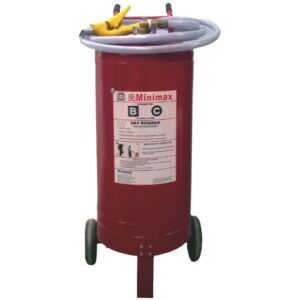
Trolley Mounted Fire Extinguisher
Capacity : 25 Kg
Discharge Time : 25-30 Sec
Certification : IS 10658
...more
Warning Stickers
product description laser printed 250 gsm paper with thermal lamination on both side with revet.
Country of Origin : India
Type : Warning Stickers
Material : Paper
Shape : Rectangular, Square
Application : Lamination, Warning Use
Color : Golden, Multicolor, Transparent
Feature : Anti-Counterfeit
Pattern : Printed
...more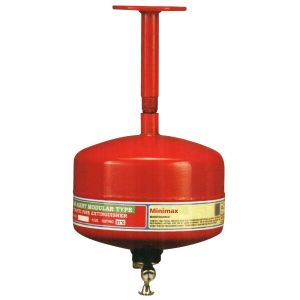
modular fire extinguisher
Type : Thermatic (57 0C/ 68 0C/ 79 0C)

Floor Stand
Product Description Material : Plastic Folding Sign [BZ-FB] Durable polypropylene sign has easy grip handle. Sign is printed on two sides. lightweight corrugated or flat folding signs. Place instructions or warnings in a spot that will be seen by visitors.
...more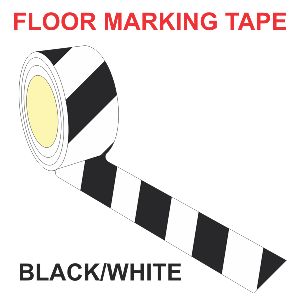
FLOOR MARKING ROLL
material: Made from PVC material and back side good quality of adhesive.Features: High adhesive. It has good resistant to solvent oil and weather. It is batter than paints. It is available in combination of two colour.
...more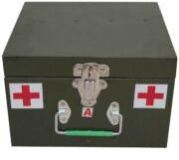
First Aid Box

ABC Stored Pressure Fire Extinguisher
Extinguisher Capacity : 1 Kg
Fire Rating : 1A 8B
Discharge Time : 8-10 Sec
Certification : IS:15683:2006
...more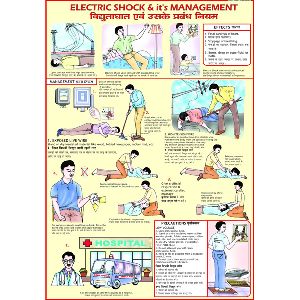
ELECTRIC SHOCK CHART
Product Description Available in English-Hindi Multicolour printing on 80 GSM map litho paper. Thermally Laminated with 30 micron thick best quality polyester film on both sides. Fitted with best quality plastic rollers at the top and at the bottom with hanging arrangement.
...more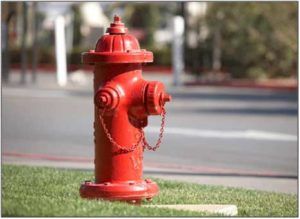
Fire Hydrant Dry System
Steel and Iron pipe may be used to construct a dry hydrant, but PVC plastic is frequently used because of its low cost, accessibility and low friction loss. Construction details at specific sites can vary in many ways according to local preferences and conditions. In any area without water mains and domestic fire hydrants, the dray hydrant concept can provide a simple, cost-effective solution to the need for access to water sources without delay. A dry hydrant consists of an arrangement of piping with one end in the water and the other end extending to dry land and available for connection to a pumper. Dry hydrants have the following features: Anon-pressurized pipe system. Use relatively inexpensive piping materials and other supplies. Are permanently installed in existing lakes, ponds, streams and cisterns. Provide a means of access whenever needed, regardless of weather. Allow years of simple operation with a minimum of maintenance. The time savings are many. Multiple lengths of hard suction hose extending to the water are not needed; usually one section to the dry hydrant is enough. The strainer is also permanently attached, saving more time. Fewer people are needed to make a hookup compared to make a conventional direct drafting hookup. When a strategically placed dry hydrant with all-weather road access allows more water to be distributed in less time, and the water can be applied effectively on the fire, fire fighter safety is improved. Dry Hydrant Advantages: Knowing about a quantity of available water in area streams, ponds and cisterns gives an advantage to a fire department only if the water is readily accessible. Soft or obstructed ground certainly limits access. Or, the needed water may be located so far away from where it is needed that a fire department’sabilitytodoits job of fire control is impaired Mobile water supply vehicles can move water from distant sources, but the critical factor is whether or not the fire department can maintain an uninterrupted supply of a predictable rate of water at the fire scene. Installation of dry hydrants into numerous nearby and developed water supplies eliminates the inefficiency and complexity of long-distance water shuttle operations. This arrangement also allows access to water sources from a roadway instead of having to work on soft ground immediately adjacent to the pond or stream.
...more
DCP Cartridge Fire Extinguisher
Extinguisher Capacity : 4 Kg
Fire Rating : 21B
Discharge Time : 8-12 Sec
Certification : IS 15683:2006
...more
Spaghetti Tong

SS Spicy Salt & Pepper Set

Salad Tong

Cake Tong

SS Atta And Maida Fix Chalni

SS Heavy Juice And Soup Strainer

Stainless Steel Coffee Strainers Wire Handle

Fire Hydrant Wet System
One piece of equipment that firefighters often take for granted is the fire hydrant. It is as vital to the operations as any other piece of equipment! However, the fire hydrant is often overlooked because it’s not carried on the apparatus like our other tools.The wet barrel hydrant is used exclusively in milder climates, where there is no chance of it freezing. Wet Barrel Components: The wet barrel fire hydrant has a number of advantages that the dry barrel does not have. The biggest advantage is that all the mechanical parts used in its operation are located above ground. This makes it much easier to access should repairs need to be made on it. Another nice feature of the wet barrel style hydrant is the location of the valve. The valve is right at the caps, which means the caps cannot be removed and debris placed in the barrel. This is a constant problem with the dry barrel hydrant in the urban setting. Plastic bags are the worst as they plug the intakes on the pump. Because the valves are all independent, adding another discharge line during operations is much quicker, as the hydrant does not have to be shut down. Just connect another line to whichever discharge valve is available and, once connected, operate the valve associated with it to flow water. It’s just that easy. The wet barrel hydrant consists essentially of a bury section and a top section. The bury section is located underground and provides the inlet for the water from the branch connection, which is then connected to the water main. The top section, which is also commonly called the body of the hydrant, extends vertically from the burysection. This top section is the main body where all the outlet valves and hardware are located. Each valve is associated to an independent outlet nozzle, which controls the flow of water. By attaching the hydrant wrench to the valve nut opposite the nozzle selected for use, and turning it counterclockwise, the valve will open and the water will begin to flow. To shut the valve down, the firefighter will need to turn the nut clockwise. All outlet nozzles require a cap on them when the hydrant is not in use; this protects the threads from becoming damaged.
...more
SPRINKLER SYSTEM
A fire sprinkler system is an active fire protection method, consisting of a water supply system, providing adequate pressure and flow rate to a water distribution piping system, onto which fire sprinklers are connected. Although, mainly used in factories and large commercial buildings, systems for homes and small buildings are now available at a cost-effective price. Fire sprinkler systems are extensively used worldwide, with over 40 million sprinkler heads fitted each year. In buildings completely protected by fire sprinkler systems, over 96% of fires were controlled by fire sprinklers alone Sprinklers may be required to be installed by building codes, or may be recommended by insurance companies to reduce potential property losses or business interruption. Operation: Each closed-head sprinkler is held closed by either a heat-sensitive glass bulb or a two-part metal link held together with fusible alloy. The glass bulb or link applies pressure to a pipe cap which acts as a plug which prevents water from flowing until the ambient temperature around the sprinkler reaches the design activation temperature of the individual sprinkler head. In a standard wet-pipe sprinkler system, each sprinkler activates independently when the predetermined heat level is reached. Thus, only sprinklers near the fire will operate, normally just one or two. This maximizes water pressure over the point of fire origin, and minimizes water damage to the building. Sprinkler activation will do less water damage than a fire department hose stream, which provides approximately 900 liters/min. A typical sprinkler used for industrial manufacturing occupancies discharge about 75-150 liters/min. However, a typical Early Suppression Fast Response (ESFR) sprinkler at a pressure of 50 psi (340 kPa) will discharge approximately 100 US gallons per minute (380 l/min). In addition, a sprinkler will usually activate within one to four minutes of the fire’s start, whereas it typically takes at least five minutes for a fire department to register an alarm and drive to the fire site, and an additional ten minutes to set up equipment and apply hose streams to the fire. This additional time can result in a much larger fire, requiring much more water to extinguish. Types: Deluge System: “Deluge” systems are systems in which all sprinklers connected to the water piping system are open, in that the heat sensing operating element is removed, or specifically designed as such. These systems are used for special hazards where rapid fire spread is a concern, as they provide a simultaneous application of water over the entire hazard. They are sometimes installed in personnel egress paths or building openings to slow travel of fire (e.g. openings in a fire-rated wall). Water is not present in the piping until the system operates. Because the sprinkler orifices are open, the piping is at atmospheric pressure. To prevent the water supply pressure from forcing water into the piping, a “deluge valve” is used in the water supply connection, which is a mechanically latched valve. It is a non-resetting valve, and stays open once tripped. Because the heat sensing elements present in the automatic sprinklers have been removed (resulting in open sprinklers), the deluge valve must be opened as signaled by a fire alarm system. The type of fire alarm initiating device is selected mainly based on the hazard (e.g. smoke detectors, heat detectors, or optical flame detectors). The initiation device signals the fire alarm panel, which in turn signals the deluge valve to open. Activation can also be manual, depending on the system goals. Manual activation is usually via an electric or pneumatic fire alarm pull station, which signals the fire alarm panel, which in turn signals the deluge valve to open. Operation – Activation of a fire alarm initiating device, or a manual pull station, signals the fire alarm panel, which in turn signals the deluge valve to open, allowing water to enter the piping system. Water flows from all sprinklers simultaneously. Water Spray: “Water spray” systems are operationally identical to a deluge system, but the piping and discharge nozzle spray patterns are designed to protect a uniquely configured hazard, usually being three-dimensional components or equipment (i.e. as opposed to a deluge system, which is designed to cover the horizontal floor area of a room). The nozzles used may not be listed fire sprinklers, and are usually selected for a specific spray pattern to conform to the three-dimensional nature of the hazard (e.g. typical spray patterns being oval, fan, full circle, narrow jet). Examples of hazards protected by water spray systems are electrical transformers containing oil for cooling or turbo-generator bearings. Water spray systems can also be used externally on the surfaces of tanks containing flammable liquids or gases (such as hydrogen). Here the water spray is intended to cool the tank and its contents to prevent tank rupture/explosion (BLEVE) and fire spread. Water Mist System: Water mist systems are used for special applications in which it is decided that creating a heat absorbent vapor is the primary objective. This type of system is typically used where water damage may be a concern, or where water supplies are limited. NFPA 750 defines water mist as a water spray with a droplet size of “less than 1000 microns at the minimum operation pressure of the discharge nozzle.” The droplet size can be controlled by the adjusting discharge pressure through a nozzle of a fixed orifice size. By creating a mist, an equal volume of water will create a larger total surface area exposed to the fire. The larger total surface area better facilitates the transfer of heat, thus allowing more water droplets to turn to steam more quickly. A water mist, which absorbs more heat than water per unit time, due to exposed surface area, will more effectively cool the room, thus reducing the temperature of the flame. Operation – Water mist systems can operate with the same functionality as deluge, wet pipe, dry pipe, or pre-action systems. The difference is that a water mist system uses a compressed gas as an atomizing medium, which is pumped through the sprinkler pipe. Instead of compressed gas, some systems use a high-pressure pump to pressurize the water so it atomizes as it exits the sprinkler nozzle. Systems can be applied using local application method or total flooding method, similar to Clean Agent Fire Protection Systems.
...moreBe first to Rate
Rate ThisOpening Hours